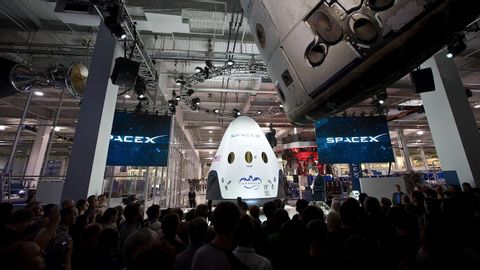
Subtitles & vocabulary
SpaceX Dragon V2 | Unveil Event
00
林宜悉 posted on 2020/03/28Save
Video vocabulary
access
US /ˈæksɛs/
・
UK /'ækses/
- Noun (Countable/Uncountable)
- Way to enter a place, e.g. a station or stadium
- The opportunity or right to use something or to see someone.
- Transitive Verb
- To be able to use or have permission to use
A2TOEIC
More conflict
US /ˈkɑnˌflɪkt/
・
UK /'kɒnflɪkt/
- Noun (Countable/Uncountable)
- Argument or struggle between two or more parties
- A serious disagreement or argument.
- Verb (Transitive/Intransitive)
- To have opposite ideas; to disagree; To not match
A2
More aesthetic
US /ɛsˈθɛtɪk/
・
UK /i:sˈθetɪk/
- Adjective
- Concerning the sense of artistic beauty
- Relating to a particular theory or conception of beauty or art.
- Noun
- a guiding principle in matters of artistic beauty and taste; an underlying principle, a set of principles, or a view often manifested by outward appearances or style of behavior
- A set of principles underlying and guiding the work of a particular artist or artistic movement.
B2
More version
US /ˈvɚʒən, -ʃən/
・
UK /ˈvə:ʃən/
- Noun
- Different way that someone interprets something
- New or different form of something
A2TOEIC
More Use Energy
Unlock All Vocabulary
Unlock pronunciation, explanations, and filters
